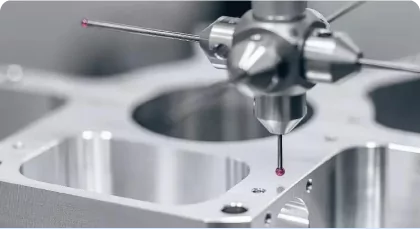Clamping Force in Injection Molding: Why It Matters and How to Calculate It
In injection molding, clamping force is one of the most important parameters. It directly impacts product quality, machine performance, and mold integrity. Incorrect clamping force can lead to defects like flash, mold damage, and inconsistent parts.
This guide explains what clamping force is, why it's essential, and how to calculate the required force for your mold.
What Is Clamping Force?
Clamping force refers to the force applied by the injection molding machine to keep the mold tightly closed during injection. It prevents the mold from opening due to high injection pressure, which would cause material to escape from the parting line, resulting in flash.
Why Clamping Force Matters in Injection Molding
Prevents Flash: Insufficient clamping force can cause the mold to open slightly, resulting in flash along the parting line.
Protects the Mold: Too much force can deform or damage the mold over time.
Ensures Dimensional Stability: Proper clamping maintains part consistency and dimensional accuracy.
Improves Efficiency: Using the optimal clamping force reduces energy consumption, lowers machine wear, and improves overall efficiency.
How to Calculate Clamping Force
To calculate the correct clamping force, you'll need two key values:
Projected Area (cm²): The surface area of the part as seen from the injection direction.
Cavity Pressure (kg/cm²): The pressure inside the mold cavity during injection.
Clamping Force Formula:
Clamping Force (tons) = Projected Area (cm²) × Cavity Pressure (kg/cm²) ÷ 1000
Example Calculation:
Part Size: 100mm × 80mm → Projected Area = 10cm × 8cm = 80 cm²
Material: PP (Polypropylene), estimated cavity pressure = 300 kg/cm²
Clamping Force: 80 × 300 ÷ 1000 = 24 tons
Recommended Machine: 26–30 tons (including 10-20% safety margin)
Common Cavity Pressure Reference
| Material | Cavity Pressure (kg/cm²) |
|---|---|
| PP (Polypropylene) | 300–500 |
| ABS | 400–600 |
| PA6 (Nylon) | 600–800 |
| PC (Polycarbonate) | 600–800 |
Note: Always refer to specific material datasheets and mold design specifications for accurate values.
Practical Tips for Setting Clamping Force
Include both part and runner areas in the projected area.
For multi-cavity molds, use the total projected area.
Thin-walled or long-flow parts typically require more clamping force.
Hot runner systems may allow for slightly lower clamping force.
Final Thoughts: Optimize Your Clamping Force for Better Injection Molding Results
Clamping force is not just a number—it’s critical for ensuring quality, consistency, and efficiency in injection molding. By calculating and optimizing the correct clamping force, you can reduce defects, minimize machine wear, and improve overall productivity.
Need help selecting the right clamping force for your mold? Contact our team—we’re here to assist!








